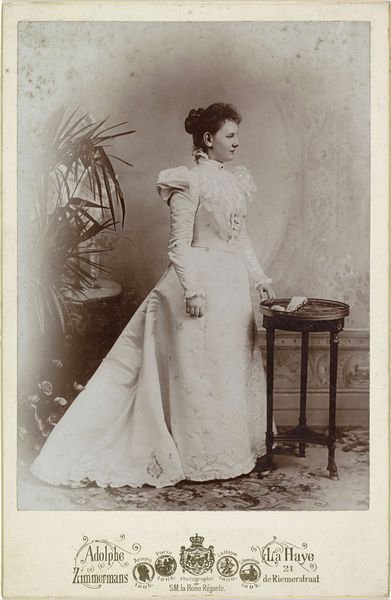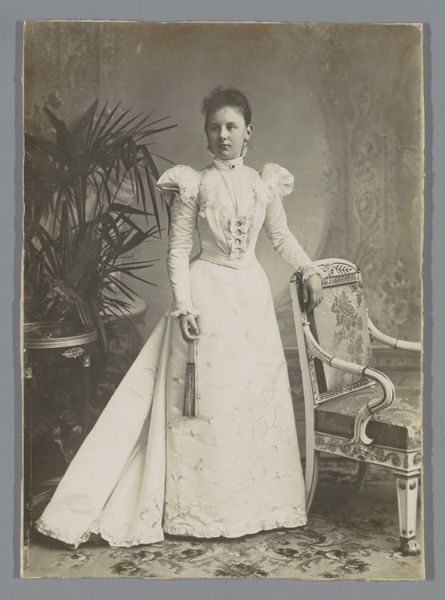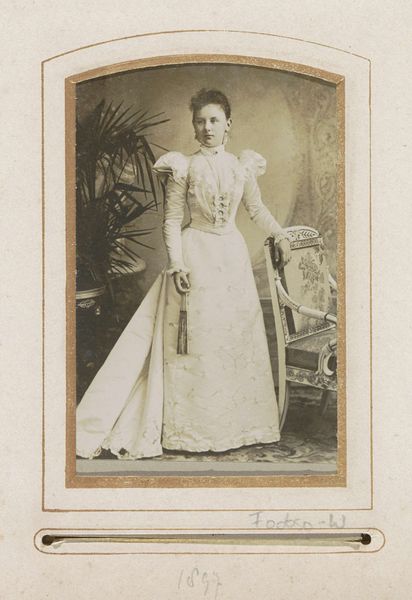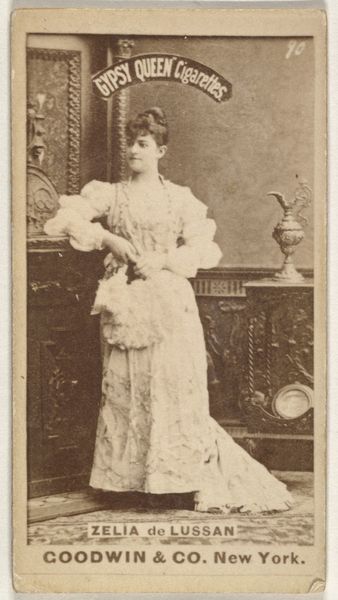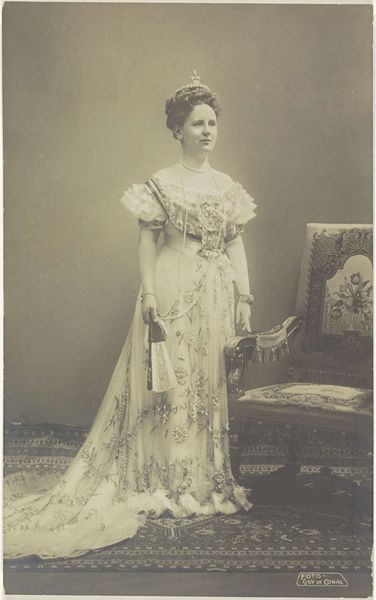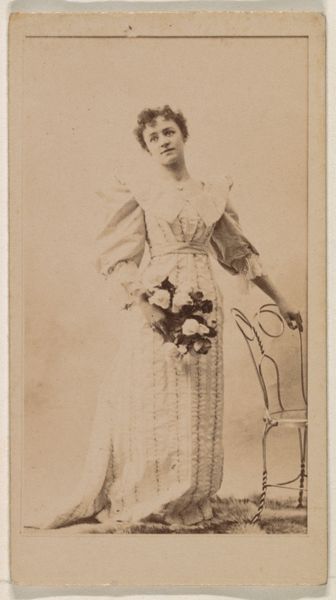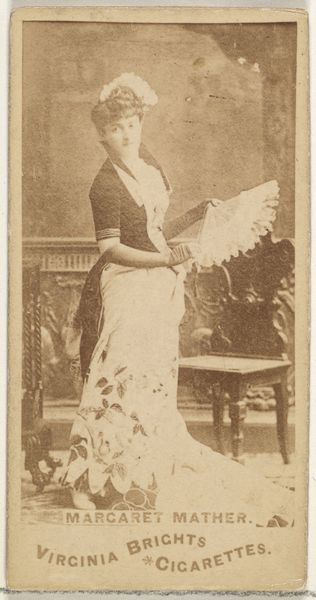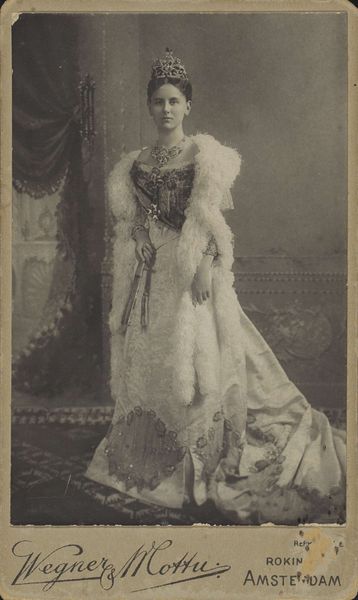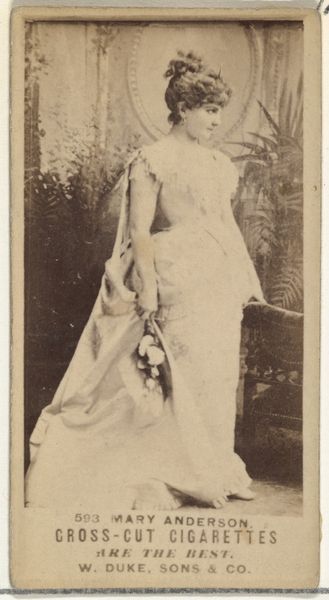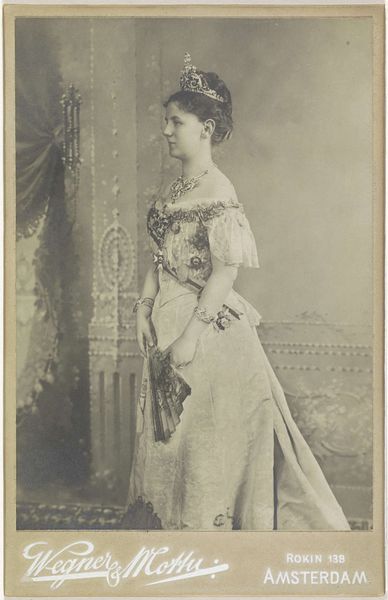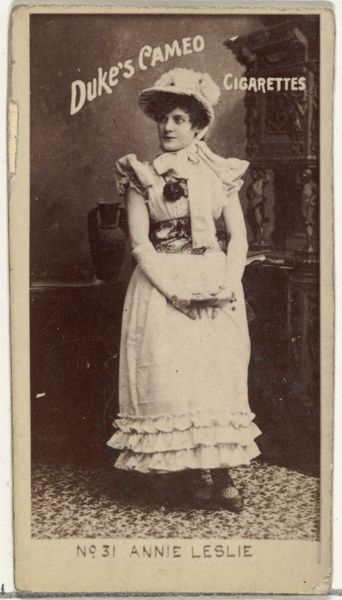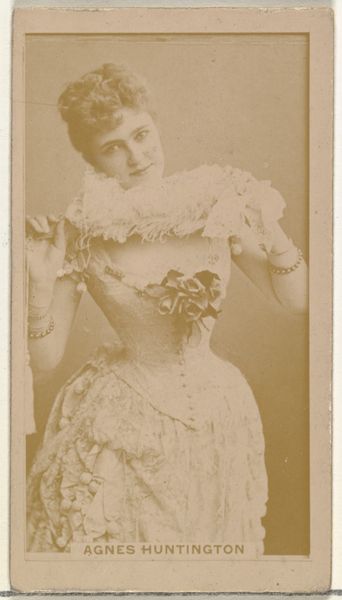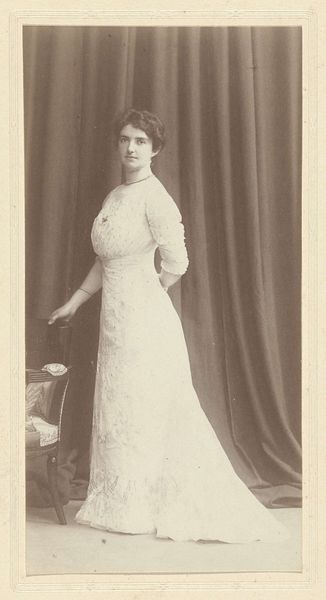
photography, albumen-print
#
portrait
#
wedding photograph
#
wedding photography
#
archive photography
#
photography
#
historical photography
#
historical fashion
#
wedding dress
#
albumen-print
#
bridal fashion
Dimensions: height 136 mm, width 101 mm
Copyright: Rijks Museum: Open Domain
Curator: Immediately, I’m struck by how formal and restrained the composition feels. There's a somber quality to it. Editor: Indeed. What we’re viewing is a photograph entitled “Portret van Wilhelmina, koningin der Nederlanden,” created in 1897 by Adolphe Zimmermans. The work, an albumen print, currently resides in the Rijksmuseum. The portrayal, especially the dress, invokes so much history. Curator: The gown, clearly designed for a significant state occasion perhaps a wedding – although one might assume the former queen, dressed in white and ornately, seems poised and remarkably self-possessed. Her demure expression, the almost archaic cut of the gown, speaks of the constraints placed on women of power, even monarchs, during that period. There's an evident negotiation of self on display here. Editor: It's a portrait meant for public consumption. Consider the setting: the carefully arranged backdrop, the prop of the small ornate table. Everything reinforces Wilhelmina’s role as a symbol of the Dutch state. Zimmermans, in many ways, uses her image as a form of political projection. Think of what a modern portrait might display: we often seem a greater emphasis on individuality, almost in stark contrast. Curator: Yet the gaze averted off to the side suggests something more than straightforward stateliness. There's a questioning, a slight resistance in her refusal to meet the viewer's gaze directly. That refusal can be seen as quietly subversive within the very formal construct of the portrait, it is indicative of both immense internal constraints, as well as small pushes in an attempt to find herself amongst all the political implications of existing during this specific time. Editor: Exactly. It encapsulates the late 19th century's vision of monarchy. A period undergoing profound social and political changes. Consider, in viewing this piece, the historical forces at play shaping notions of nationhood and the queen's image. The camera lens becomes an instrument of state. Wilhelmina becomes a figure designed to visually unify and project a kind of national pride. Curator: Reflecting on this photograph, it prompts me to consider the limited agency historically afforded to women leaders, particularly in visually representing their identities in the public sphere. It encourages a valuable intersectional discourse connecting visual representation and societal norms. Editor: And considering it more deeply through the lens of history and context shows it's never merely an individual portrait; it is a meticulously crafted historical and political artifact.
Comments
No comments
Be the first to comment and join the conversation on the ultimate creative platform.
